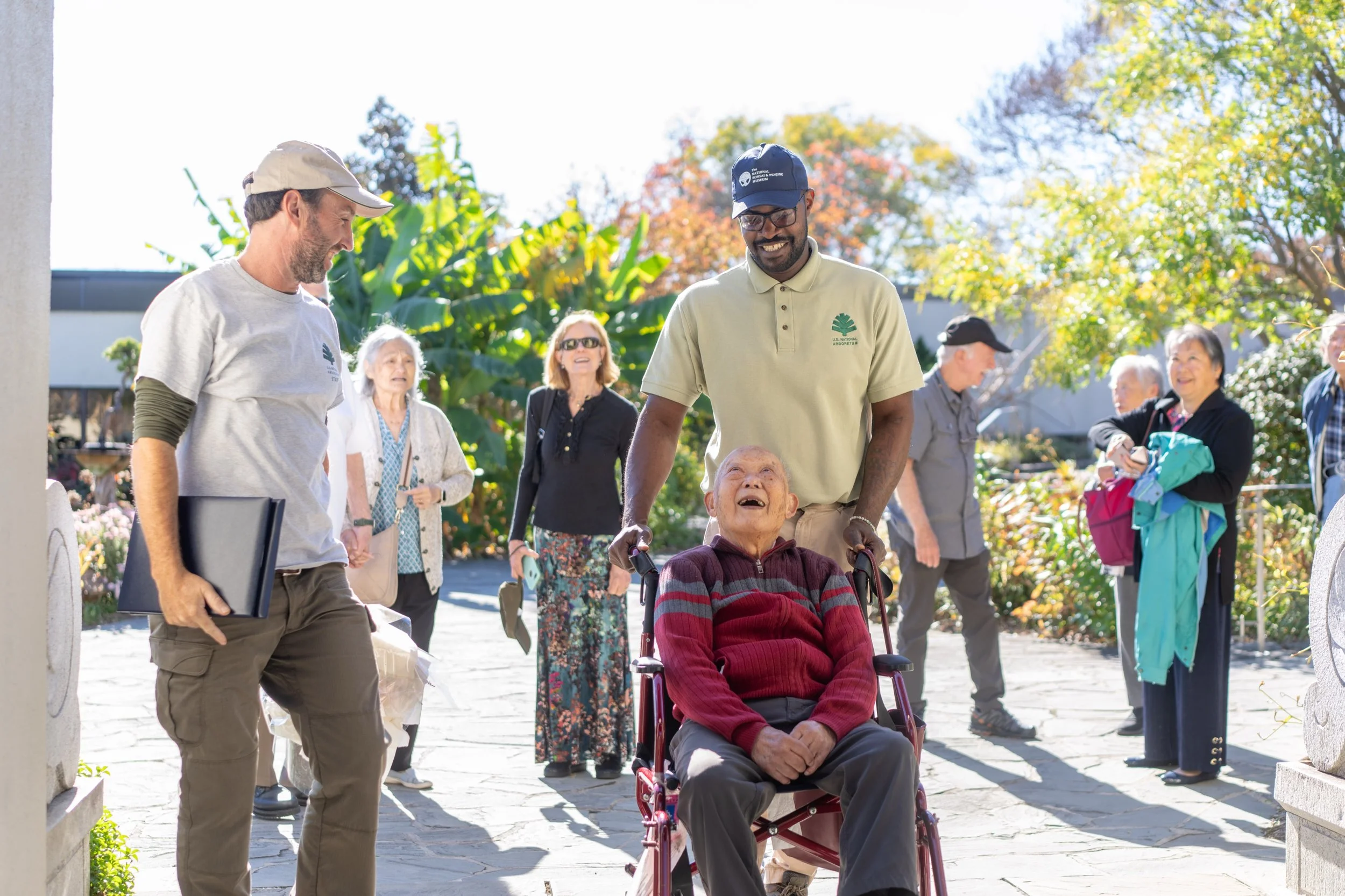Nobusuke Kishi, former president of the Nippon Bonsai Association, hands the list of the 53 bonsai gifts to U.S. Ambassador James Hodgson at a ceremony in Tokyo, Japan. The tree on the left is the first Japanese black pine donated to the Museum.
The National Bonsai & Penjing Museum was created after the United States received a wonderful bicentennial gift of 53 bonsai from Japan in 1976. For this month’s historical tree spotlight, we wanted to highlight the first tree on the list of gifted bonsai: a black pine donated by Saichi Suzuki.
A symbolic facet to the Nippon Bonsai Association’s gift, the pine is believed to have been about 200 years old – the same age as the United States when the gift was given. While Japanese black pines can now be found growing all over the world, the species is native to Japan.
Museum curator Michael James said the tree embodies “yamadori,” the practice of digging a tree from the wild and putting it into a container. Saichi Suzuki, the tree’s donor, collected and began training the pine in a bonsai pot in 1895. According to James, the tree is estimated to have been about 125 years old when Suzuki removed it from Atsumi Peninsula in Aichi Prefecture in Japan.
Suzuki later founded Daiju-en, a very famous bonsai nursery in Japan (at which former Museum curator and current NBF board member Jack Sustic once studied). Daiju-en is famous for cultivating Japanese black pines, and Suzuki is often credited with being the first to discover the black pine decandling technique – a process completed in the summertime after a pine’s candle, or shoot tip, lengthens.
Suzuki stumbled on that process by accident after witnessing a caterpillar eat the tips off a black pine. While usually thought to be a disaster, Suzuki saw that the insect’s munching actually produced a second growth of shoots with smaller needles than the first growth. This discovery was important because Japanese black pine needles tend to be fairly long for bonsai culture, at least compared to a white pine.
“We are always trying to reduce the size of leaves to make the trees look bigger,” James said. “That serendipitous caterpillar feast made him realize black pines can be decandled and put on a second flush of growth that is even smaller, more compact, better looking and proportional to a bonsai tree.”
James said Suzuki began experimenting with the decandling practice on his own and perfected the decandling technique that is now widespread in bonsai culture.
“Decandling pines is critical for having well-maintained trees,” he said.
Now in the Japanese Pavilion, the inaugural Japanese black pine is about 245 years old. Stop by our collection to see the tree that helped to launch our Museum.
































